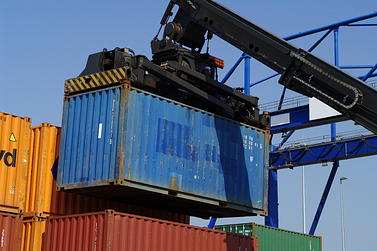 East Coast ports saw a big increase in cargo shipments as shippers diverted their shipping containers from West Coast ports due to severe congestion during the long International Longshore & Warehouse Union (ILWU) contract negotiations with the Pacific Maritime Association (PMA).
East Coast ports saw a big increase in cargo shipments as shippers diverted their shipping containers from West Coast ports due to severe congestion during the long International Longshore & Warehouse Union (ILWU) contract negotiations with the Pacific Maritime Association (PMA).
Of course, East Coast ports want to hold on to their gain in market share, but recent East Coast port congestion at major ports like that of New York-New Jersey and Virginia might be a hindrance.
Congestion on the East Coast is certainly not hitting the levels seen on the West Coast, but it is enough to cause delays and demurrage fees to cost shippers. And freight rates from China and other Asian countries are already higher to the East Coast than to the West Coast.
So East Coast ports are taking action to fight congestion and maintain the higher confidence shippers have in them over West Coast ports.
Here are three actions taken by East Coast ports, and the Port of New York-New Jersey in particular:
Extended Gate Hours
In the last blog we talked about the congestion at the Port of New York and New Jersey. To battle it and get the cargo out, terminals at the port have extended gate hours.
Last month, JOC reported:
Most container terminals in the Port of New York and New Jersey will keep truck gates open Tuesday — a longshoremen’s union holiday — as they struggle to clear backlogs caused by high volume and bunched ship arrivals.
…
Several New York-New Jersey terminals kept gates open last week for extended hours. GCT-Global’s gates were open until 9 p.m. through the week and during daytime hours Saturday.
Hellenic Shipping News reported today, April 16th:
A spokesperson from the port authority [of New York and New Jersey] told Port Strategy that the terminal operators have extended gate hours and that Global Terminal has announced that it will, for now, remain open until 6pm each day to accommodate more pickups.
Keeping the gates open longer is a simple way for the terminals to get more cargo moved in a day.
Truck Management Systems
The last blog highlighted how surges of trucks hitting port terminals all at once, especially in the morning when gates first open, is a cause of congestion.
Lines of trucks miles long trying to get into the Port of New York and New Jersey is a sight the terminal GCT Bayonne wants to put an end to.
Commuters would like to see an end to the traffic jams and gridlock that go along with the lines of trucks too.
GCT Bayonne is doing more than wishful thinking. They’re working on launching a truck management system this year where trucks will have appointments for entering the New York-New Jersey port terminal to pick up or drop off cargo.
Back in December, the Journal of Commerce shared an article on the terminal’s plan to launch a truck appointment system. Here’s a small excerpt:
“We’re going to put an appointment system in place, and we’re going to work out the details. Many, many decisions have to be made and questions must be answered, but that is our target right now,” said Richard Ceci, vice president, information technology at GCT USA, operator of GCT Bayonne, previously known as Global Terminal.
“It will require a lot of work, a lot of cooperation, a lot of patience, but this is a paradigm shift,” Ceci said. “In five years, this industry is going to wonder how in the world it ever managed to operate without trucks coming into the terminals with appointments.”
The Port of Virginia, which has struggled to clear backlog cargo due to severe winter weather this year along with the increase in cargo, is also planning to launch a truck appointment system this year.
An industry-wide performance task force recommended the creation of an appointment system for trucks at the ports. East Coast ports are taking the recommendation seriously.
If successful, the truck management systems could help significantly reduce port congestion.
Early Labor Negotiations
As was proved once again by the ILWU and PMA negotiations on the West Coast, every time the coastal contract for the longshoremen expires, shippers suffer through delays in cargo movement.
Longshore unions enact slowdowns to gain leverage on employers and employers use shift cuts and lockouts to put pressure on the union.
The slowdowns on the West Coast were a major factor in the congestion that drove shippers to the East Coast. Shortly after cargo started shifting from the West Coast, East Coast made a move to increase shipper confidence in their ports.
The United States Maritime Alliance (USMX) and International Longshoremen’s Association (ILA) agreed to open discussions on a long-term contract agreement three years before the current contract expires.
While this doesn’t exactly reduce current congestion issues, the move does set up the East Coast to avoid major congestion that could be caused by slowdowns, strikes, or lockouts because dockworkers and employers can’t agree on a new contract when the previous one expires like what just happened on the West Coast.
